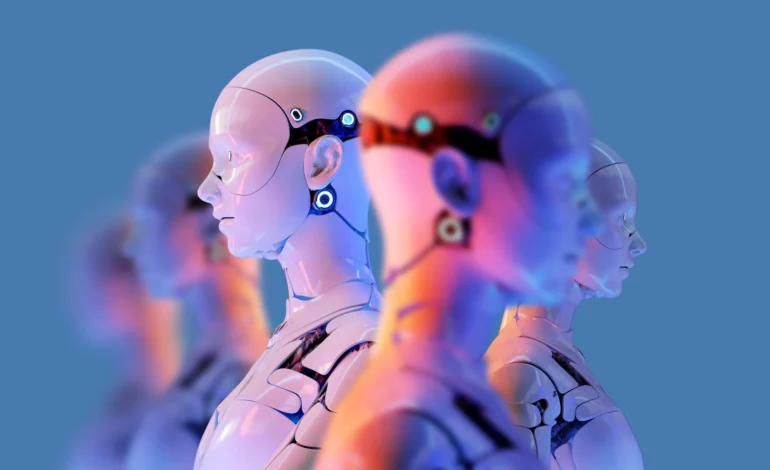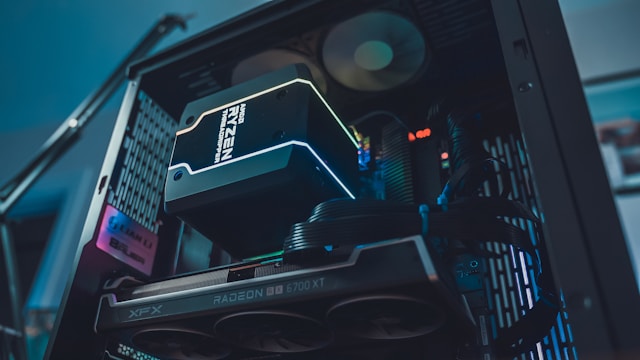Robotics: From Factories to Collaboration

The Evolution of Robotics: From Assembly Lines to Collaborative Workspaces
Robotics has captivated imaginations for decades, conjuring images of futuristic automatons performing complex tasks. While the reality may not yet match science fiction entirely, the field has undergone a remarkable evolution, transitioning from simple industrial automation to increasingly sophisticated systems capable of collaborating with humans. This blog post will delve into this fascinating journey, exploring key milestones, current trends, and potential future developments in robotics.
The Dawn of Industrial Robotics: Automation Takes Root
The story of modern robotics begins in the mid-20th century with the rise of industrial automation. The concept wasn’t entirely new – early mechanical automatons existed centuries ago – but the advent of computers and electric motors provided the crucial ingredients for a truly revolutionary change. In 1961, Unimate, considered the world’s first industrial robot, was installed in a General Motors factory in New Jersey. This pioneering arm, designed by George Devol and Joseph Engelberger, performed spot welding tasks on car bodies – repetitive, dangerous work previously done by humans.
Key characteristics of these early robots included:
- Limited Functionality: Primarily focused on performing single, predetermined tasks.
- Lack of Flexibility: Difficult to reprogram for new jobs; often requiring significant hardware modifications.
- Safety Concerns: Operated in caged environments, separated from human workers due to potential hazards.
- High Cost and Complexity: Initially restricted to large-scale manufacturing operations.
Despite these limitations, industrial robots rapidly transformed manufacturing processes. They significantly increased production speed, improved quality consistency, and reduced labor costs. The use of articulated arms – robots with multiple joints allowing for a greater range of motion – became commonplace in industries like automotive assembly, electronics manufacturing, and metal fabrication.
The Rise of Specialized Robots: Expanding Beyond the Factory Floor
As robotics technology matured, its application expanded beyond traditional industrial settings. The development of specialized robots tailored to specific tasks began to emerge. These included:

- Welding Robots: Refined for precision welding in automotive and aerospace industries.
- Painting Robots: Providing consistent and high-quality paint finishes while minimizing worker exposure to harmful chemicals.
- Pick-and-Place Robots: Automating the movement of parts and materials within warehouses and distribution centers.
- Medical Robots: Assisting surgeons with minimally invasive procedures, enhancing precision and reducing recovery times (e.g., da Vinci Surgical System).
The introduction of microprocessors allowed for more complex programming and greater control over robot movements, leading to improved accuracy and efficiency across these specialized applications.
A Paradigm Shift: The Emergence of Collaborative Robots (Cobots)
For decades, robots operated in isolation, separated from human workers by safety barriers. However, the concept of collaborative robotics – or “cobotics” – marked a significant shift. Cobots are designed to work alongside humans, sharing workspaces and tasks while ensuring safety through advanced sensors and control systems.
Several factors contributed to the rise of cobots:
- Advancements in Sensor Technology: Force/torque sensors, vision systems, and proximity detectors allow robots to “sense” their environment and react appropriately.
- Improved Safety Features: Rounding of edges, force limiting, and emergency stop mechanisms minimize the risk of injury.
- Increasing Demand for Flexibility: Cobots can be easily reprogrammed to perform a variety of tasks, adapting to changing production needs.
Cobots are now finding applications in diverse sectors, including:
- Small and Medium-Sized Enterprises (SMEs): Their affordability and ease of use make them ideal for businesses with limited resources.
- Electronics Assembly: Assisting workers with repetitive tasks like component placement and soldering.
- Packaging and Logistics: Automating packaging processes and improving efficiency in warehouse operations.
- Healthcare: Supporting nurses and caregivers with patient handling and medication dispensing.
The Current Landscape: AI, Machine Learning, and Beyond
Today’s robotics landscape is characterized by the integration of advanced technologies like artificial intelligence (AI) and machine learning (ML). These tools enable robots to learn from experience, adapt to changing conditions, and perform more complex tasks autonomously.
Key trends shaping the future of robotics include:
- AI-Powered Navigation: Robots are increasingly equipped with sophisticated navigation systems that allow them to map their environments and plan optimal paths.
- Computer Vision for Object Recognition: Enabling robots to identify and manipulate objects based on their shape, color, and texture.
- Machine Learning for Task Optimization: Allowing robots to learn the most efficient ways to perform tasks through trial and error.
- Human-Robot Interaction (HRI): Focusing on developing intuitive interfaces that allow humans and robots to communicate effectively.
- Cloud Robotics: Connecting robots to cloud-based resources for data storage, processing, and software updates.
Looking Ahead: The Future of Human-Robot Collaboration
The future of robotics is inextricably linked to human collaboration. We are moving towards a world where robots aren’t seen as replacements for humans but rather as valuable partners that augment our abilities.
Potential future developments include:
- Exoskeletons: Wearable robotic devices that enhance strength and endurance, assisting workers in physically demanding jobs.
- Service Robots: Providing support for elderly or disabled individuals, performing household tasks, and offering companionship.
- Autonomous Mobile Robots (AMRs): Navigating complex environments without human intervention to deliver goods, perform inspections, and provide security services.
- Soft Robotics: Utilizing flexible materials that mimic the dexterity of biological systems, enabling robots to interact more safely with humans and delicate objects.
As robotics continues to evolve, it is crucial to address ethical considerations such as job displacement, data privacy, and algorithmic bias. Responsible development and deployment of these technologies will be essential to ensuring a future where humans and robots can thrive together.
The journey from industrial automation to collaborative workspaces has been remarkable, and the next chapter promises even more exciting advancements in robotics – blurring the lines between science fiction and reality and transforming the way we live and work.



